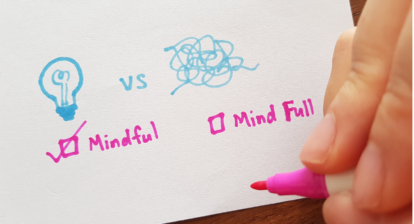Human Capital
For optimum results, human capital is a resource that requires active management. Leaders will often talk about people being the most valuable asset in their business, but organisations can be blind to the wear and tear that bad management practices have on the workforce.
To maintain its value, an asset needs investment. If proper support is not renewed, constantly drawing on something will eventually erode its value, and this principle absolutely applies to people. Inadequate investment in your staff causes disengagement and low morale, leading to lacklustre performance.
In today’s highly automated data-driven business environment, humans are often relegated to numbers, and there is a constant tension between achieving organisational goals and managing people. Supporting a diverse workforce of individuals, each with their unique value system is a challenge, and the added complexity of hybrid working has reiterated the importance of having people managers who understand that wellbeing must be integrated consistently across the business.
While supervising workloads, scheduling, and meeting deadlines are some of the traditional aspects of people management, the pandemic has accelerated discussion around future ways of working with organisational wellbeing an emergent key component. Over my years of assessing and advising on this theme, I have observed a number of common traits among organisations that have successfully integrated wellbeing into their working days.
Cultural Engagement
Engagement with the company’s culture is a necessity. I have seen many organisations spend large sums in outsourcing sophisticated wellbeing services, but if they do not fit the culture, this will be a wasted expense. The starting point here is getting the organisational culture right in the first place for which a top-down, bottom-up approach needs to be embraced.
It is, for example, imperative that all staff knows, understand, and live the company’s key values. Having a clear understanding of the principles that underpin the culture explicitly establishes the standards of expectation in your organisation. This is the company’s DNA; it influences behaviour and attitude, and it impacts learning and collaboration. In other words, the culture reflects how organisational values are related to employee identity.
Organisations with a strong sense of their own culture communicate it widely. It is an integral part of their onboarding programme and is supported by a solid policy framework that provides a roadmap for how the company works and guidance on expected practices. To continuously engage with and influence behaviours that support wellbeing, staff are involved in policy reviews and refresher training is available. In addition, regular emphasis through visuals, email tag lines, and other communication channels of the values supporting your organisation’s culture is critical.
Check-In Meetings
The check-in meeting is another tool I have seen used to great effect by successful organisations, although their effectiveness largely depends on the manager’s ability to ask the right questions, to listen, and to weave such sessions into the standard working schedule. When these check-in meetings are conducted with empathy and authenticity, they provide an excellent communication channel between the manager and team members.
From a management perspective, workloads and staff wellbeing can be monitored efficiently through these conversations. Stress is a normal part of life, but individuals must be given the opportunity to destress, and this kind of meeting is an excellent space to identify issues before they escalate. The check-in meeting provides managers with the opportunity to acknowledge someone’s accomplishments, gauge their mood, and track their workload. They are a particularly efficient mechanism for managing wellbeing and maintaining connections among staff.
Engagement Networks
In a similar way, well-structured employee engagement groups are a powerful way of supporting a sustainable approach to workplace wellbeing and provide an excellent resource for enriching company culture. These groups form a network for employees with common interests to get together, share and collaborate, and an organisation can have one or many such groups depending on its size and commitment to supporting such forums. Successful examples have represented a range of interests such as diversity and inclusion, cultural appreciation, mental health, and wellbeing.
Coaching
Often managers are promoted because of their technical ability, with little focus on soft skills. Now more than ever, it is essential people leads continuously engage in developing soft skills capabilities. Coaching provides meaningful and psychologically safe engagement with a peer or with an independent individual, to build essential people leading skills like emotional intelligence and self-awareness. With the ever-increasing demands on their time, coaching provides an excellent opportunity for managers to step back and reframe conversations to strengthen essential people management management skills and participate in an activity that supports their wellbeing. Attributes such as optimism and self-confidence are often taken for granted, but they require fine-tuning; coaching provides the space to do just that.
More specifically, people managers are instrumental in how wellbeing is integrated into the workday, and so it is essential that they have the room to reflect on, assess and develop their soft skills. For meaningful engagement, coaching must be embraced by everyone in a company, but in particular by people managers and senior leadership. Establishing coaching as standard practice, rather than a default support tool for underperforming managers, secures buy-in.
Respect is earned through action, and truly listening leads to trust. Such attitudes result in a working environment where people feel their input is valued and they are safe to challenge, innovate and be their best selves. It is in these settings that people thrive and want to give their best.
Organisations often adopt a myopic approach to wellbeing with a focus on rolling out events and information without employee engagement, but it cannot be exclusively outsourced. Leaders should instead invest in understanding organisational culture, identify the gaps, and upskill and equip people leads with the right tools to ensure they can competently and consistently integrate wellbeing across the organisation. An events calendar will enrich the wellbeing efforts of a company but represents only a short-term investment with limited returns if implemented in isolation.
In summary, a company’s attitude to employee wellbeing and welfare will be revealed through the words and actions of its leaders. The above overview provides a sample of impactful approaches to staff engagement that constitute part of a sustainable employee-driven wellbeing strategy.
If interested in exploring sustainable approaches to organisational wellbeing or exploring ECR coaching click here.







